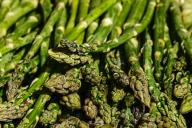Lots of people choose to mix alcohol with fizzy drinks like Cola at parties simply because they like the taste, but this combination has one effect.
For some reason, fizzy alcohol can make you drunk faster, so it's a pretty tricky drink of choice.
Here are some reasons for that.
Increased Absorption
When you consume alcohol, it primarily gets absorbed in your bloodstream through your stomach and small intestine.
Fizzy drinks, especially those with carbonation like soda, create more gas in your stomach.

This increased gas pressure can push the alcoholic liquid through the lining of your stomach and into your bloodstream more rapidly.
Effervescent Effect
The bubbles in carbonated drinks create more surface area for alcohol to come into contact with the walls of your stomach and intestine.
This enhances the absorption process because the alcohol is in closer proximity to the blood vessels that carry it to the brain and other parts of the body.
Less Liquid Volume
Fizzy alcoholic drinks may feel less filling than non-carbonated ones, so you might consume them more quickly, leading to a faster intake of alcohol.
This can make it easier to drink more alcohol in a shorter amount of time, increasing the speed at which you become intoxicated.
Deceptive Effects
The carbonation in fizzy drinks can mask some of the sensations of alcohol's effects, such as the taste and the "burning" feeling in your throat.
As a result, you may not realize how much alcohol you've actually consumed, leading to overindulgence and quicker intoxication.
Mixers
Fizzy alcoholic drinks often involve mixing spirits with carbonated beverages.
The mixers can make the alcohol more palatable, potentially encouraging you to drink more and, again, speed up the process of becoming drunk.
Keep in mind that your body can still only process alcohol at a certain rate, and overconsumption can lead to various health risks and impaired judgment.









